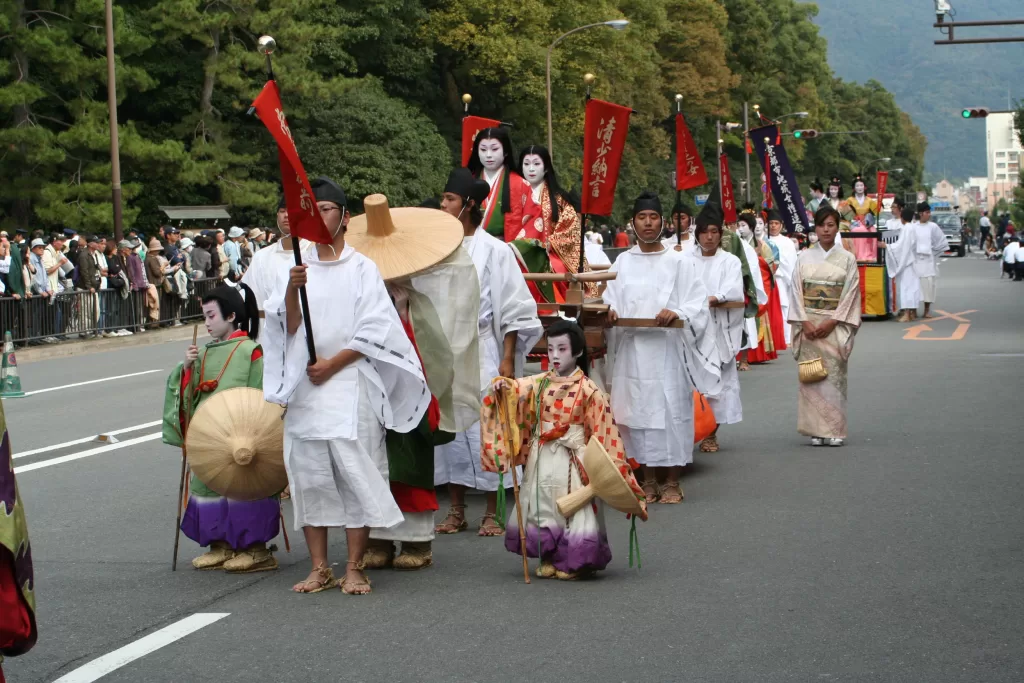The Resplendent Jidai Matsuri: A Celebration of Japan’s Historical Eras

Celebrating Kyoto’s Rich History
In a marvelous spectacle of time-honored tradition, the Jidai Matsuri, also known as the Festival of the Ages, comes alive in Japan’s cultural hub, Kyoto. Taking place annually on October 22nd, it is one of Kyoto’s top three festivals despite its relatively young establishment in 1895. The origin of the festival is traced back to the commemoration of the 1,100th anniversary of Kyoto’s founding and the effort to trigger a city-wide revival.
Jidai Matsuri was initiated amidst concerns over the future of Kyoto after losing its status as Japan’s capital to Tokyo in 1868. This move included relocating not only the Emperor and imperial family but also a significant portion of the government.
Faithfully Recreated Costumes
The festival is characterized by an elaborate parade featuring around 2,000 volunteers decked in meticulously recreated costumes reflecting diverse eras in Japanese history dating from the Meiji era to as far back as the Enryaku era in the 780s. The costumes are a fusion of art and authenticity. Made with traditional techniques, replicating those used a millennium ago, these costumes cover everything from attire for famous historical figures and princesses to those for warriors, priests, politicians, merchants, and commoners. Jidai Matsuri is one of the most awaited Kyoto events in October.
The highlight of this picturesque journey backward through time lies in appreciating nuances in prominent clothing trends and aesthetic sensibilities across different eras, including military attire like armor and helmets along with delicate costumes such as jūnihitoe.
March Through Time
Starting at noon each year, this historical procession embarks on a two-kilometer march from Kyoto’s Imperial Palace to the Heian Shrine. Along the way, paid seating options are available at various locations for those who wish to enjoy the grand festival comfortably. An English guide is also provided with additional information about this rich display of culture and history, making for an engaging learning experience for visitors around the globe.
Meanwhile, on this annual stroll through antiquity, spectators might be able to spot significant historical figures like Hideyoshi Toyotomi—a farmer who rose through ranks to become one of Japan’s unifying rulers—and Murasaki Shikibu—the acclaimed author hailing from ancient Japan.

Lavish Parade Details
The parade features great details like oxcarts representing noble transportation from Heian period or samurai horses brimming with majesty and splendor; providing interesting insights into Japanese customs and traditions across different timelines.
Enhancing the overall sanctity and significance is the all-important inclusion of mikoshi or portable shrines that carry with them the spirits of revered Emperors Kanmu and Komei upon whose honor Jidai Matsuri was instituted. Witnessing these ornate shrines up close during this festival remains a unique opportunity revered by attendees annually.
Making History Accessible
Contrary to merely confining historical artifacts or masterpieces behind museum glass panes, Jidai Matsuri brings history alive, allowing locals and tourists alike to observe centuries worth of style evolution not just through clothes but also showcasing important figures who impacted Japan’s culture significantly. It’s an annual journey into past but celebrated vibrantly in present making it truly deserving title “Festival of Ages.
If you want to immerse yourself in the vibrant culture of Kyoto and indulge in the beauty of Japanese ceramics, don’t miss out on the Kiyomizuyaki no Sato Matsuri.